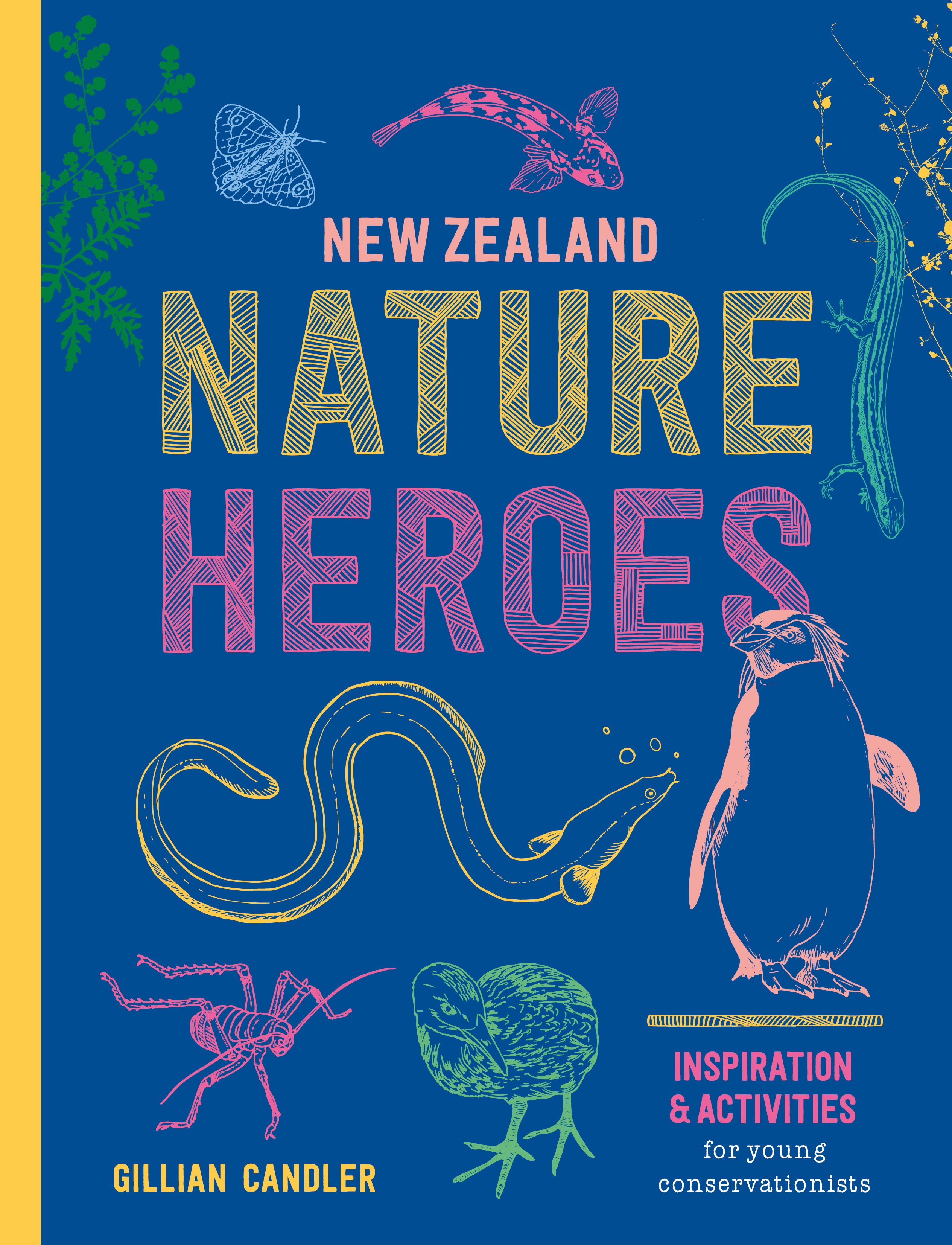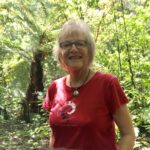Gillian Candler and Janet Hunt are writers of factual books for children and adults about New Zealand nature. They have never met, but they quickly found plenty in common when asked by The Sapling to interview each other.
We asked the authors to discuss their use of technical language, te reo Māori, and whether animals are given human characteristics, are given a name, or remain nameless. We were curious to know about their work spaces and habits and what sparks ideas and turns them into a book.
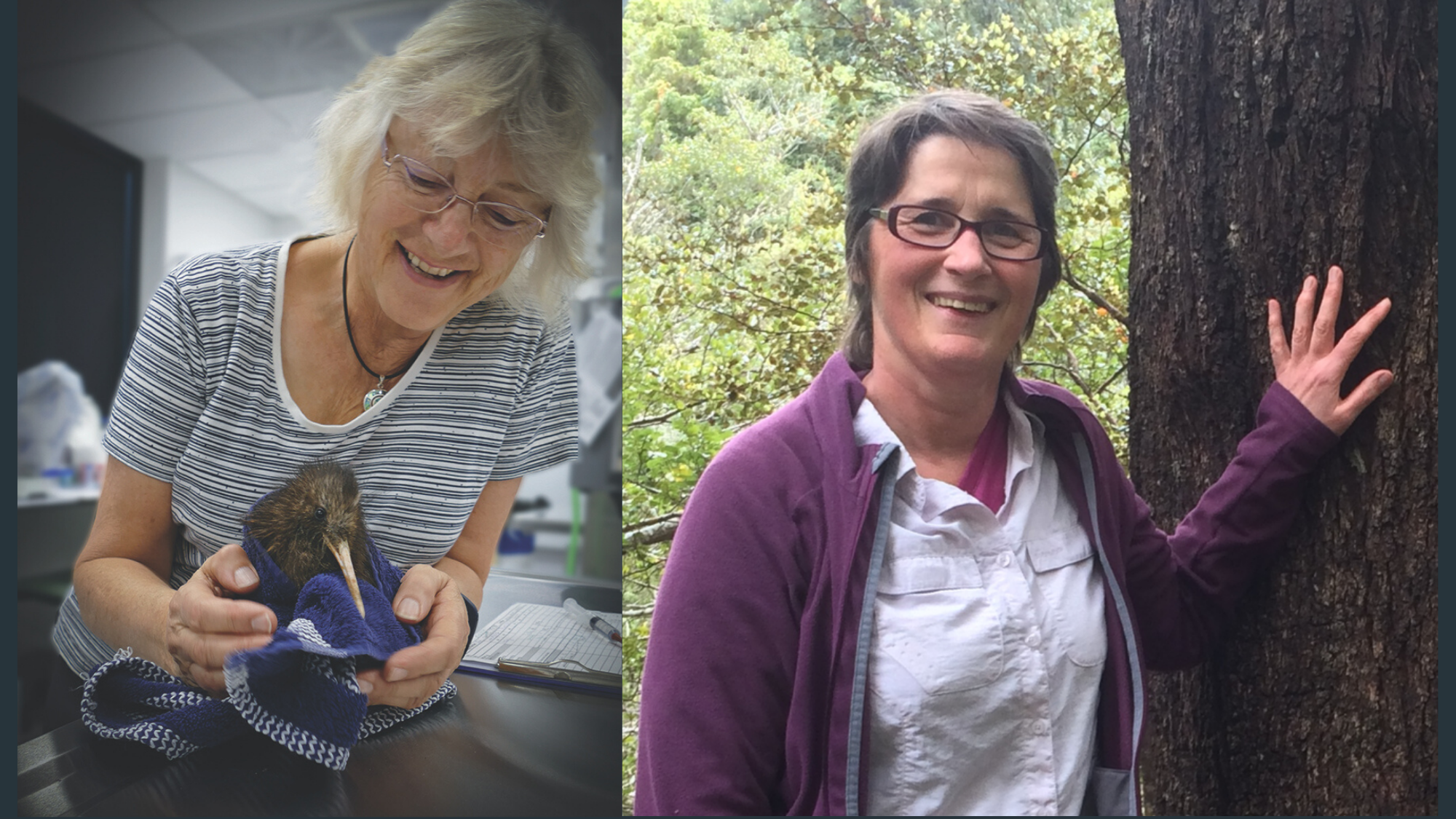
Gillian: What comes first for you, the book topic or the animal’s story? With E3 Call Home did you want to write about godwits and then go about seeking a story like that of E3, or did you hear about the story of E3 by chance and think, “That’ll make a good book”?
Janet: It varies from book to book. In the case of E3 Call Home, I had been observing the annual comings and goings of godwits around the shores of Waiheke for many years but the germ of the story was in my adult book Wetlands of New Zealand. One chapter centres on estuaries as wetlands and their importance in the environment. That was [in] 2007, the year when E3 and his cohort were on the wing, I was following their tagged progress across the Pacific as they migrated to Alaska. I spent a week at Miranda on their annual shorebird course, filling in the background.
J: What gave you the idea of a book about nature heroes? And how did you select your heroes?
G: The idea behind New Zealand Nature Heroes started to develop about five or six years ago. At the time I was reading some interesting biographies about New Zealand scientists such as Lance Richdale – people who I found inspiring and thought should be better known. I was also volunteering on some significant conservation projects on Mana Island and in Pukerua Bay and coming into contact with dedicated individuals – scientists and volunteers, who willingly spent the night out on the cliff tops catching seabirds returning to their burrows. They are also an inspiration to me and I began to think of them as “nature heroes,” and so the book idea started to develop. As my book was for young people (8 to 14-year-olds), I decided to extend the concept to include activities that young people could do so that they too could be nature heroes.
They are… an inspiration to me and I began to think of them as ‘nature heroes’, and so the book idea started to develop.
I started off with a few well known heroes – Richard Henry, Ingrid Visser, Don Merton – and friends and fans suggested more names – Perrine Moncrieff, Miriam Ritchie, Nicola Toki, Brandon Intermediate Enviro Group – others came from research. I also wanted to get a range of heroes from well known to just getting started, including some youth heroes. But I have spreadsheets with lists of names that would fit ten books of this kind.
G: Did the three kiwi stories in Three Kiwi Tales naturally emerge from among other stories of Wildbase hospital, or did you purposefully go looking for kiwi stories?
J: This was a more deliberate decision. The publishers requested another Wildbase story, but I didn’t want to just repeat How to Mend a Kea (2017) which covers the what, where and why of Wildbase hospital, the people, the patients and the mission. I decided to focus on one species and the kiwi seemed obvious for several reasons, although there were a few other candidates.
Obviously, kiwi are our national icon and are deserving of coverage because their populations are in steep decline. The main reason was that they are constant Wildbase clients. There is almost always at least one kiwi on the wards being treated for such things as malnutrition, dehydration, illness and accident, depending on the age and provenance of the bird. Pauline Nijman, Wildbase Hospital and Recovery Supervisor and I settled on the three kiwi cases that are showcased in the book.
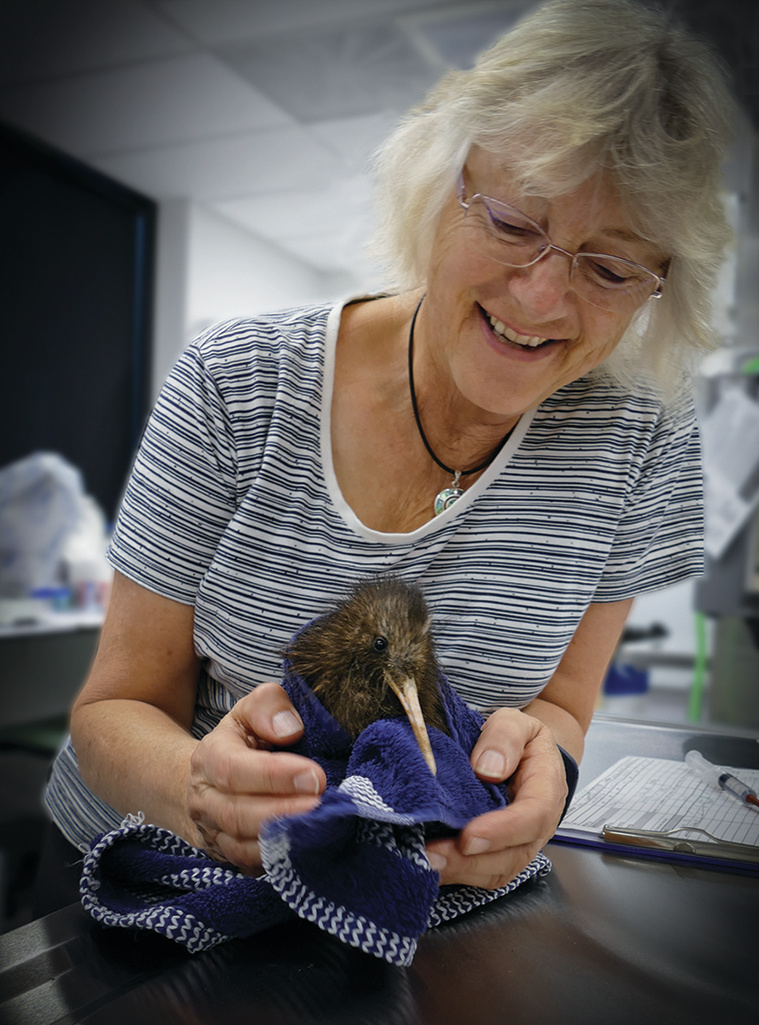
G: I find it interesting that the kiwis in Three Kiwi Tales are all named, just like E3 in E3 Call Home. How does choosing a named bird help the story along?
J: My policy is to avoid naming my subjects, so names are used in my writing (usually) only where the creatures already have names from the people who are working with them.
It’s a fine line, though. I follow the line taken by Ted Hughes – to see wild birds and animals for themselves [as] separate from our often romantic and human readings of their lives. From this viewpoint, names anthropomorphise – or make the creature into versions of people, their actions interpreted through our lenses. For example, ‘the joyful robin singing’. Is it really joyful, or is it just obeying a deep and innate urge to define and defend territory?
I follow the line taken by Ted Hughes – to see wild birds and animals for themselves [as] separate from our often romantic and human readings of their lives.
On the other hand, we can’t wholly escape our human viewpoint. For many readers, it’s helpful that they can relate to the animal on a more intimate level. E3 is just one of thousands of godwits on migration; we single him out, and through observation of what happens to him, generalise to the wider experience of the whole flock. The process, I imagine, increases empathy for all non-named creatures as well.
It’s useful and necessary in storytelling to distinguish between one individual and another. So we have E3, the male that loses his transmitter, and E7, the female that makes it all the way with her transmitter’s battery lasting the complete loop from New Zealand all the way to the Yellow Sea, to Alaska, through the northern breeding season and back home over the Pacific.
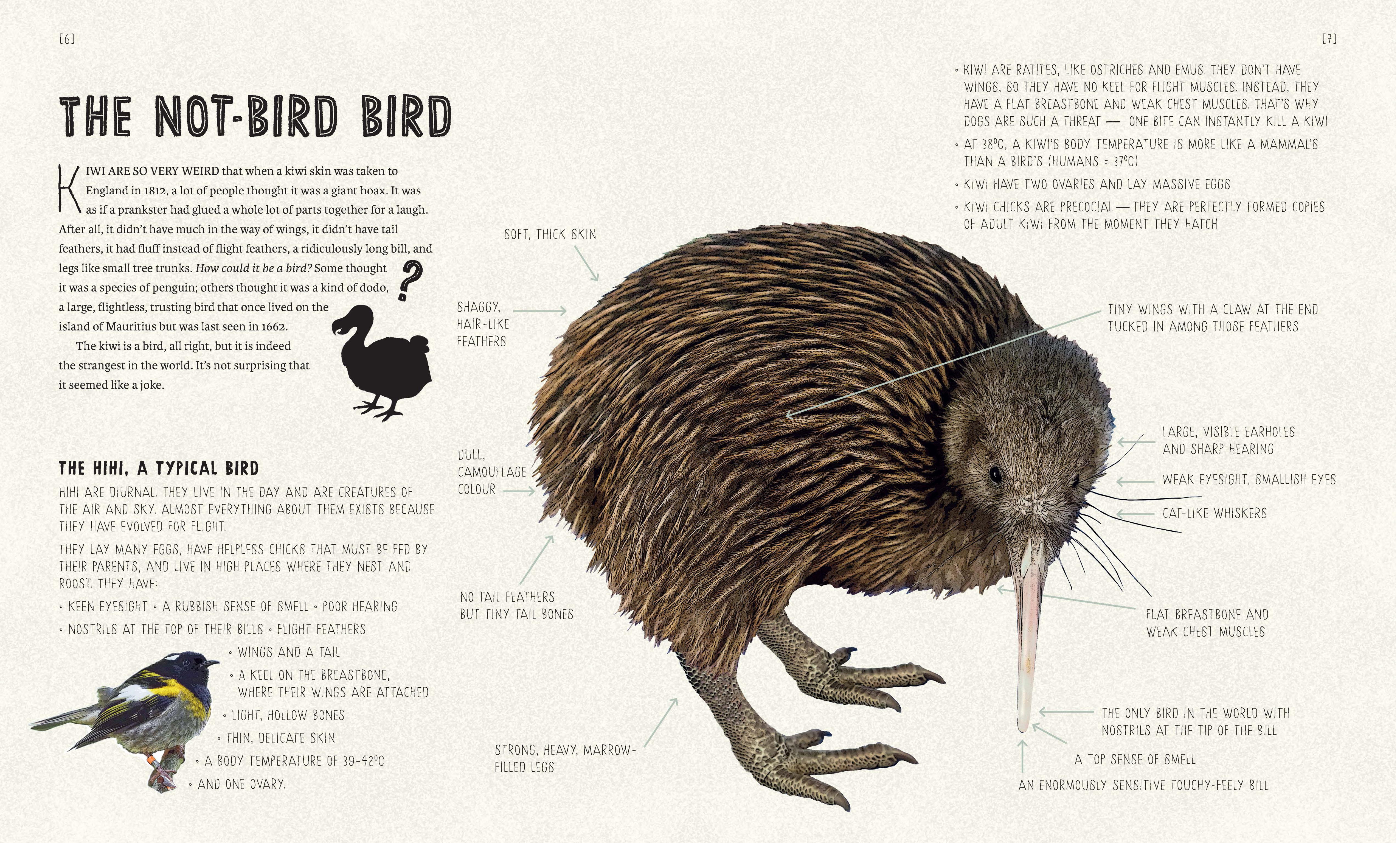
G: Some of the biological explanations in Three Kiwi Tales are quite complicated, for example the exact make up of an egg was really instructive for me. Are you sometimes tempted to shy away from these explanations because they are hard to simplify for children? How do you go about gauging the level of difficulty; do you test what you’ve written out on children?
J I suppose I am always conscious of my audience. I ‘speak’ my writing in my head, but I don’t necessarily simplify words. I am, however, careful not to overload the text with language that is too sophisticated and hope that context, plus helpful adults, plus technology might plug any gaps. Most of my readers, I suspect, would already be very competent readers. I recently went on a Storylines tour in the Auckland area and met a lot of young people, including a large number who will become conservationists of the future. They were especially rewarding to meet. Impressive!
I feel that I should test my material out on children, but the publishing schedule is such that I’m almost always up against time constraints and it passes. To some extent, I write for the child within. For instance, in researching I also found the whole process of egg laying, development, and hatching incredibly interesting. The writing evolved around the assumption that others would share that interest. I wanted to share what I had discovered.
I found the whole process of egg laying, development, and hatching incredibly interesting. The writing evolved around the assumption that others would share that interest.
Our audience is so broad, so multi-talented and exposed to a wide array of influences and thinking through various media. I want to interest the adults in the lives of the kiwi as well. I hope it’s not too difficult though.
I am conscious of the role of illustration in conjunction with the text. So, even if a passage of text is a little challenging, an accompanying photograph or diagram will complement the meaning of the text and assist in comprehension.
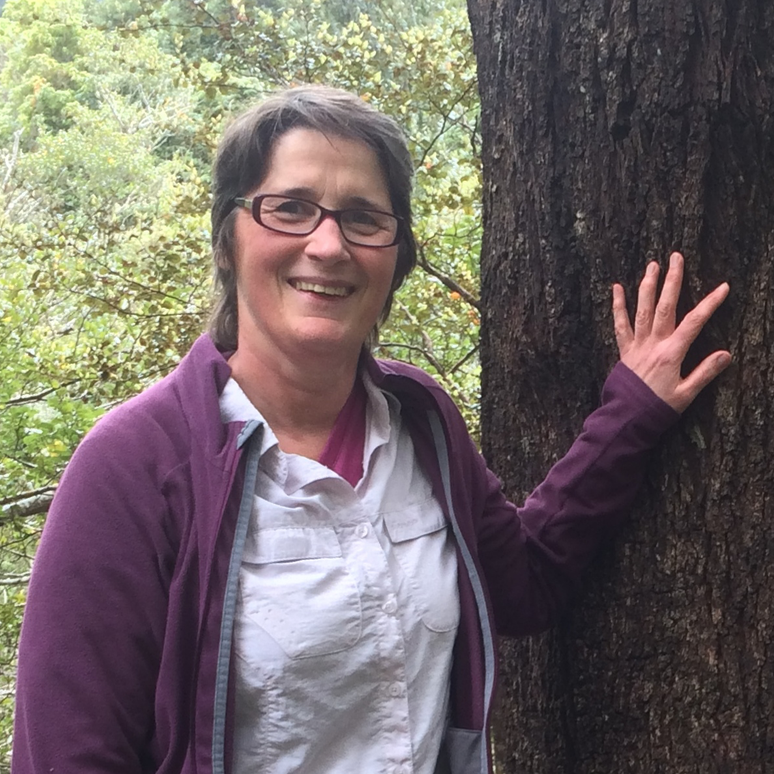
G: I often hold in my mind the memory of my son when he was eight – he’s nearly thirty now – as the child I am writing for. But I love your point about ‘writing for the child within’. That’s so true; it’s important that we use our natural curiosity and hold on to our child-like wonder.
J: Another aspect of language, which I think also requires a judgement about the knowledge and expectations of the reader, is the use of te reo Māori in an English language publication. I always find this tricky, knowing how much to use, especially when writing about New Zealand fauna (and flora). I would like to use more —but [I] worry about whether this will alienate readers.
For instance, kererū is a well-established usage that has cast off its old association of ‘wood pigeon’. Likewise, whio, although there are some who would still use ‘blue duck’. How about pīwakawaka for ‘fantail’?
What’s your policy?
G: I’ve always tried to include both English and te reo Māori names for living things to be as inclusive as I could. But the design or flow of the text has usually meant one name receives prominence. In my first book, At the Beach, I gave prominence to the names I thought were most commonly used, so ‘oystercatcher’ rather than tōrea, and kina rather than ‘sea urchin’. But I noticed when visiting schools that children were readily saying pīwakawaka for ‘fantail’ and an increasing amount of other te reo Māori words and phrases are being used in the classroom. So in New Zealand Nature Heroes, we decide to use both te reo Māori and English names when the animal is first mentioned, and then the Māori name from then on.
Young children like naming things and categorising them, but they often want only one name or answer. So when I talk to children, I try to get across that we have many names for animals and plants, and they can all be correct in context, unless it’s the name of another animal or plant. When I visit schools we spend a bit of time calling like owls – calling out the different names for Ninox novaeseelandiae – ruru, morepork and the Australian boobook, which is also a Ninox, to show both that people often name animals after their sound and how that can end up seeming quite different depending on the setting and culture.
Young children like naming things and categorising them, but they often want only one name or answer.
J: Yes, usage has changed so much, which is excellent! I do a similar thing, though maybe not as consciously, with Māori names in the text.
G: Tell me about your writing space. Do you have an office? A view? Tidy or lots of tea cups? Brimming with bits of nature? Or do you go elsewhere to write – the library, say, or in the field?
J: I often go elsewhere to research, say the library or the field, I take notes [but] I rarely write there. I do most of the writing – and the bulk of the research – in what is euphemistically called my ‘studio’, a purpose-built office tucked around the back of the garage. My view is of the native bush behind our house rather than anything more expansive, though in the past I’ve had some great outlooks. I prefer to be separate from the main house.
It’s quiet out here aside from the resident thrush having its say and today I can hear a kōtare barking. There are few distractions – at most a distant lawnmower and sometimes traffic noise from the main highway along the road. An old ex-solicitor’s oak desk dominates one side of the room while a row of computer gear occupies the other. The walls are lined with books reflecting various passions. I am constantly attempting to prune them; I resolve to become more ruthless. It’s more-or-less tidy but it does cater for a number of purposes including admin from our local branch of Forest & Bird, and sometimes there are a few too many piles awaiting attention! If you fall behind, a cascade ensues and things swiftly get out of hand.
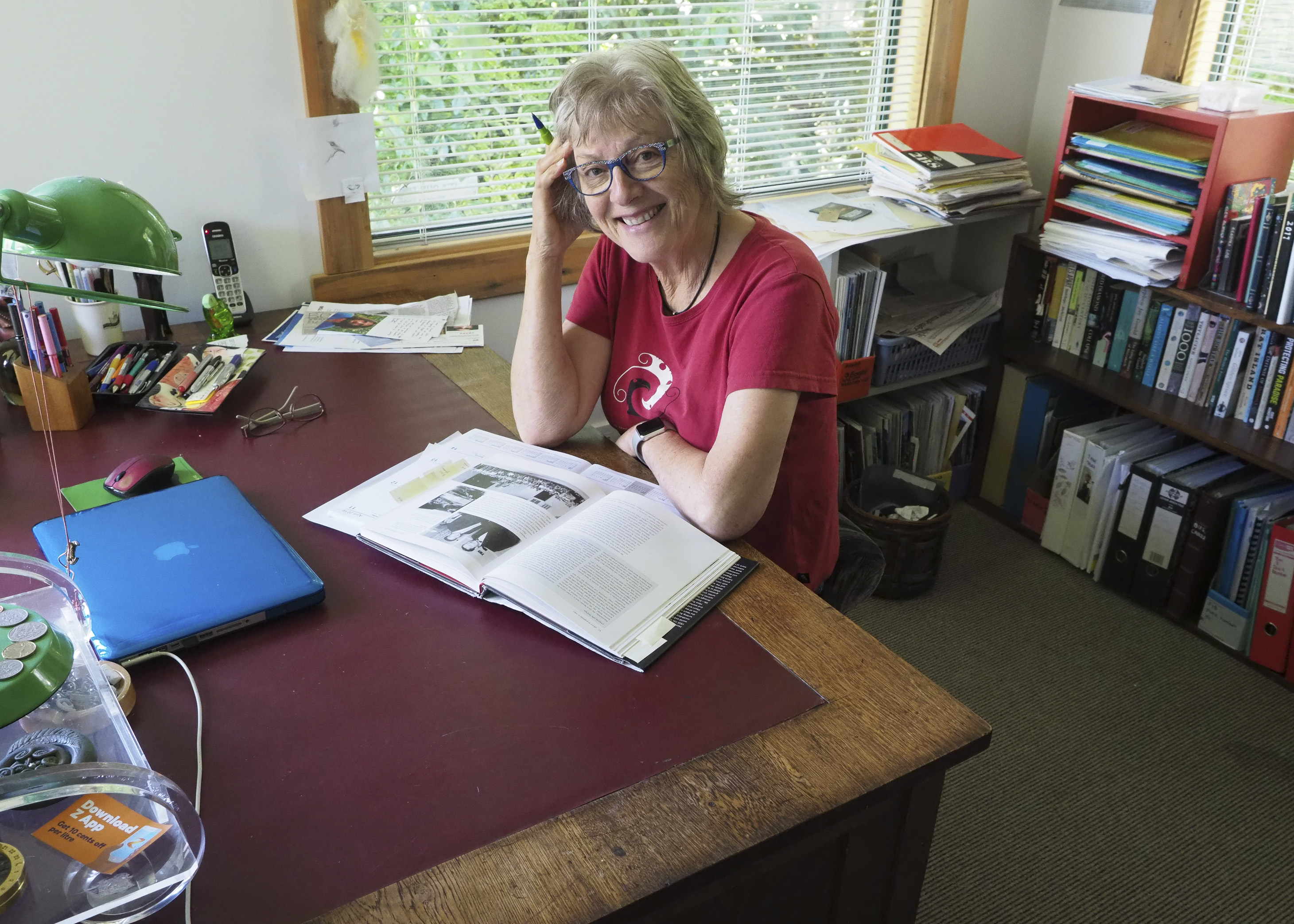
I do have a certain amount of stuff on the shelves; a bird’s nest with eggshells, kererū feathers, a dead bumblebee and a shredded butterfly, shells and stones as well as a miscellany of ornaments – a green china polar bear that came from my mother’s house, a stone owl from Athens, a yellow duck given to me by my grandmother and my father’s old shaving brush – among other things! So it’s a little crowded, but mainly practical and generally very comfortable.
G: Like you, I find I write best in my home space, in my case it’s a room in my house with a wonderful view of the sea and Kāpiti Island. There’s a large pōhutukawa out front and I can watch the tūī coming and going from there, or look out to sea to spot gannets diving.
I have two desks! The main one with my computer on it and a smaller old hall table that I think of as my project space. That’s where I pile up books I’m reviewing, lay out the materials I need for a Writers in Schools workshop, or try out a craft that I’ll do with kids at a library event.
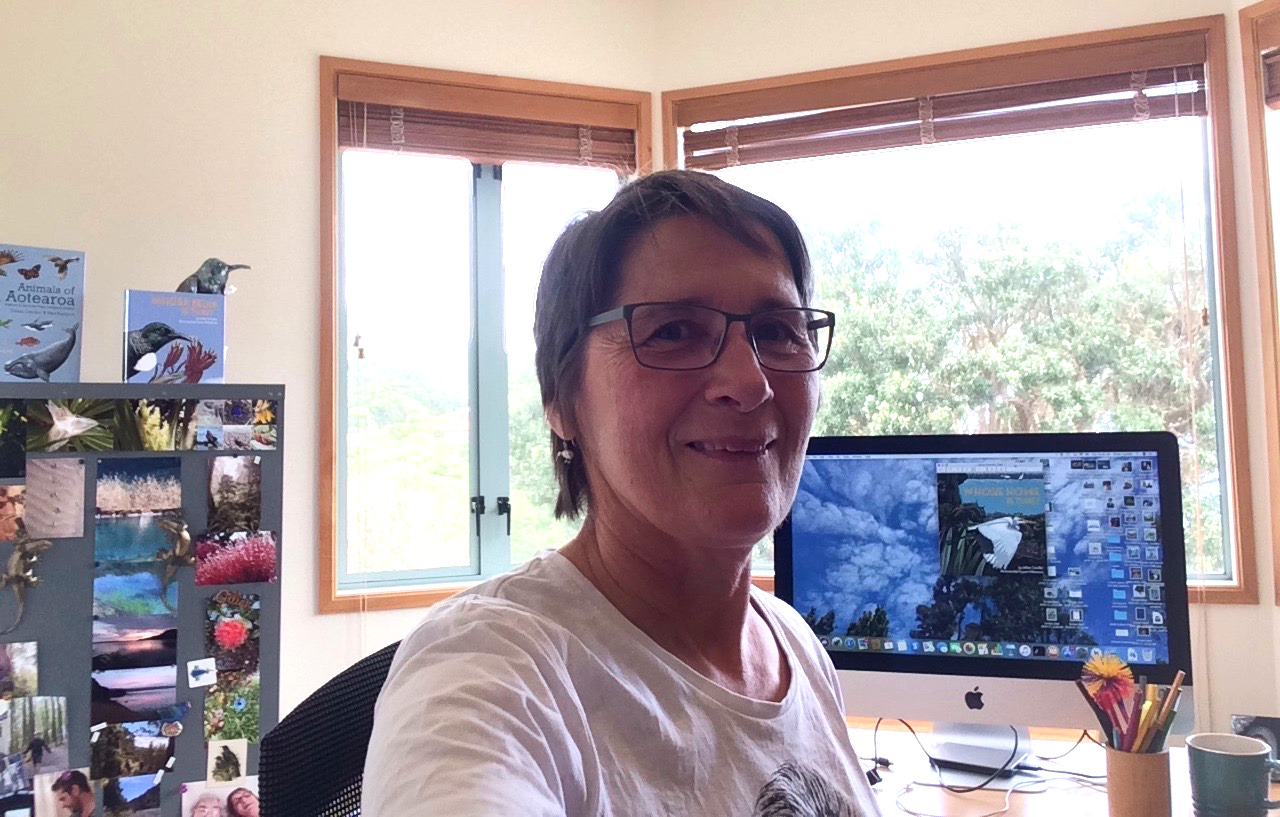
A papiermache tūī looks down on me from atop a filing cabinet. It was made by artist Meredith Thorpe as part of an amazing bush scene she created for Whitcoull’s as a response to my book In the Bush. And the side of the filing cabinet makes a handy inspiration board of photos from bush walks or conservation projects. As encouragement when the going gets tough, I always have my latest book on display along with any certificates or awards or fan mail.
I have lots of books too, and am also not that good at pruning them. However, I’ve created a rule that I have to stick to the number of shelves I’ve got. For every new book that comes in, an old book has to go out!
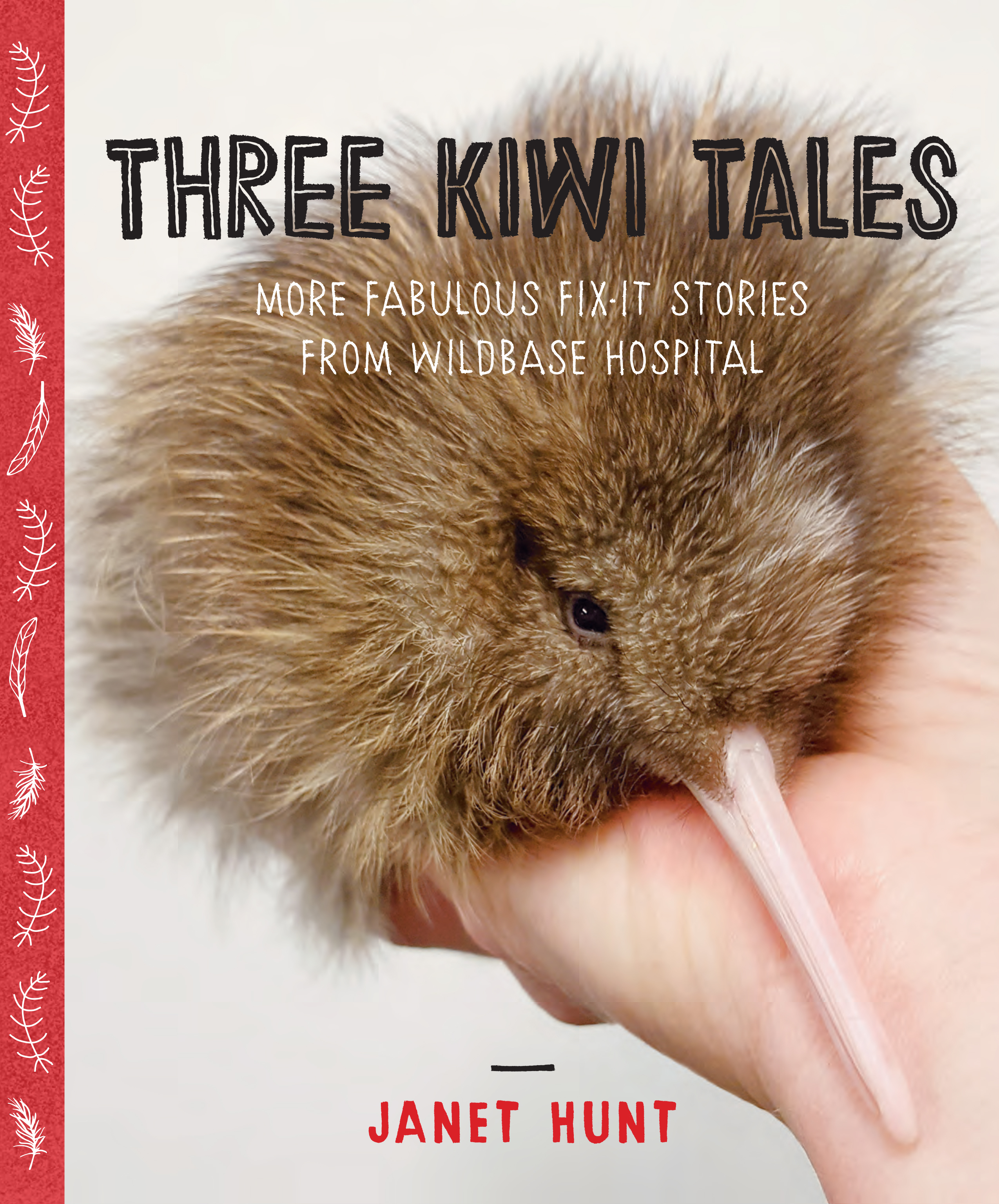
Three kiwi tales: more fabulous fix-it stories from wildbase hospital
by Janet Hunt
Massey University Press
RRP: $24.99
